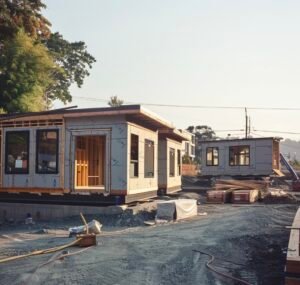Challenges and Solutions
What factors contribute to the challenges of developing affordable housing in rural communities?
Challenges to developing affordable housing arise primarily from the approach taken by Legacy Developers, which often fails to resonate with the needs and preferences of rural communities. For instance, these developers tends to prioritize large-scale apartment complexes when tasked with creating affordable rural housing, leading to heightened complexity, cost overruns, and extended project timelines. Such projects are out of sync with rural communities due to difficulties in finding suitable zoned land, the necessity of installing roads and utilities, resource constraints and misalignment with rural cultural values.
Legacy Development Approach:
- Long Development timelines (3+ years is not uncommon)
- Vulnerable to cost overages
- Excessive build costs for utilities and site work
- Minimal available buildable land in rural Oregon
- Large projects do not align with rural communities
IDRAH Approach:
- An expedited solution for Rural Affordable housing. Up to 40% reduction in build timelines for similar-sized projects
- Controlled build process through offsite Modular Commercial manufacturing
- Can utilize existing platted lots
- Projects are more palatable and less disruptive to rural communities.

The IDRAH Solution:
To help mitigate cost overages, unknowns, and delays, IDRAH utilizes Modular Commercial Development. With Modular Development, up to 80% of the build is conducted offsite, in a controlled build environment. While the apartment mods are being built, we simultaneously start on the site work. This construction approach enables us to decrease construction timelines by up to 40%